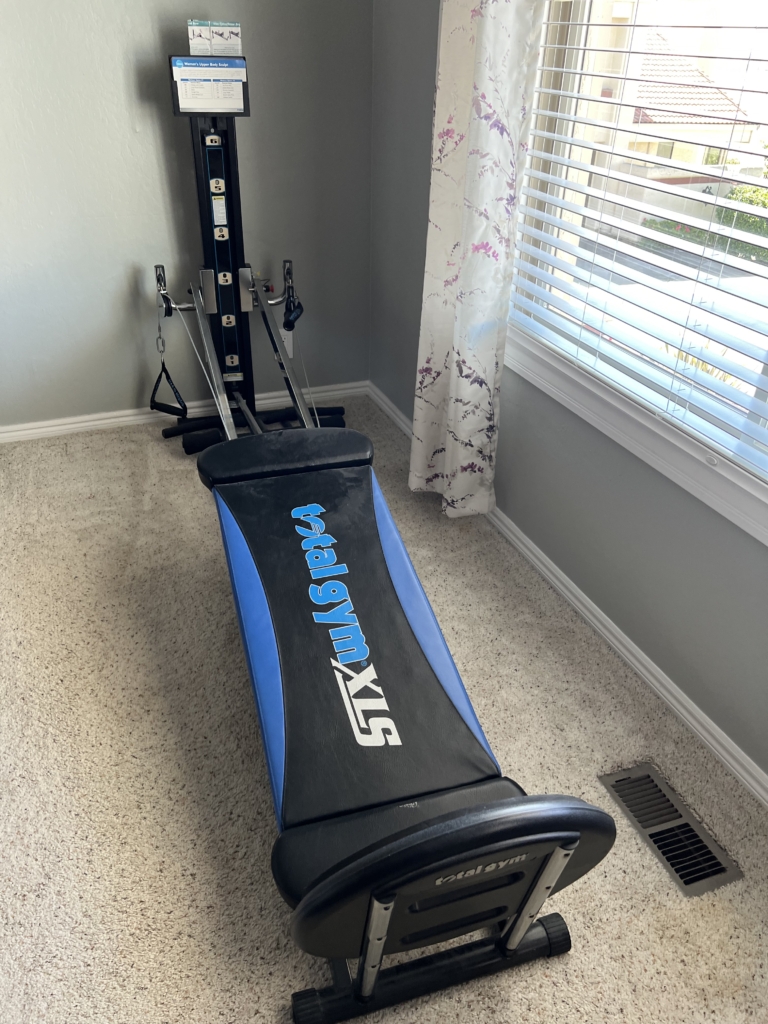
We have this massive machine in our spare room. At one time, someone in our family thought it was a good idea.
Now it’s not. It’s just taking up space.
Time to sell it.
🧹🗃️ Out with the old…
Speaking of clearing out stuff that’s no longer useful, now’s a great time to make space for relevant Information.
It’s been fun celebrating the new roles many of you have landed recently.
But whether you earned a new role in the last 2 weeks or the last 4 years, how about taking 15-30 minutes to clear out dated details—even if you’re not actively looking?
Spring is a great time to scan your career profile to identify details that no longer serve you or your target companies. 🍃
There are exceptions to every rule, but generally speaking you shouldn’t need to include information beyond 15 years. So if you’re about to add achievements for the last 5 years, think about what you can remove from your earlier career.
Especially if you’re working in high tech or marketing—where so much has changed—take special care to replace technical skills and terms that no longer apply to you or your field.
🏆…In with the new!
Here are some questions to spark ideas for updates:
- What new achievements can you add?
- Have you earned a promotion?
- Did you expand the scope of your role? Say, from regional sales management to sales and marketing leadership?
- Have you learned new skills or picked up a new certification?
- Have you taken on a new team?
Don’t worry. This doesn’t need to be a major assignment. Just focus on a few key sections:
Headings
Make sure you update your resume and LinkedIn headings to reflect what you’re doing in your current position if it’s different from what you did in your last job. To take it a step further, if you want to avoid being pigeonholed by your current role, go to my blog post on that very topic.
LinkedIn About Section
Does your About section read as if your last role is still current?
If so, make space to highlight your new role by pruning content re: your (now) previous role, and change any references to your previous job to the past tense.
Skills Sections
Since you can include up to 100 skills on LinkedIn—and there’s no downside to doing so—continue to add new ones.
On the other hand, word packing is not advised for your resume. If your resume includes a keyword bank (the section at the top that lists your skills), be sure to swap in new skills. You were already doing this as you tailored your resume for different job postings, right? 😉).
Experience Sections
Be sure to add your new role in the Experience sections on both your LinkedIn profile and resume.
Pro tip: If you worked in a company that had high brand recognition, but otherwise seems dated, you can create a Prior Experience section on your resume, list your company name (and role, if relevant), and omit dates. You can also mention the company in your About section (another great workaround to avoid listing dates). For example, you can mention that you launched your career at ABC company.
While you’re changing everything in your last role to the past tense, don’t forget to update those “on track to…” details. For example, if you were on track to exceed your revenue goals when you last updated, can you confirm that you actually achieved that—and add a hard data point?
Volunteering & Board Roles
Take a minute to scan your Volunteer and Board sections.
Have you taken on new leadership roles within your organizations? This is a great section for adding additional keywords—especially if the skills you use in your board or volunteer work are related to your profession.
If you’re no longer involved with those organizations, and they’re not related to your career, it may be time to remove them. An example is coaching youth sports.
Time passes. Seasons change. Keep your career profile refreshed so you’re prepared for your next opportunity.
🔎 Scan for words that don’t add value
Now’s a good time to remove words that simply don’t add value—and in some cases even weigh down your resume.
Ditch the Dated
I know I’ve harped on this a lot, but I’m still seeing dated content, such as References available upon request and career objective.
Relinquish Responsible for…
Replace words like responsible for with action verbs and data points.
Action verbs give you more ownership AND take up less space.
Here’s an example:
Rather than:
Responsible for launching…
Try:
Launched…
If you kick off your bullet with a verb like Led or Spearheaded, you’ll get to the point quicker than if you start with Responsible for…
Omit Unnecessary Sub-headings
Did you know you don’t need to include sub-headings like Summary and Skills at the top of your resume? It’s not a deal breaker, but you’d be surprised at the amount of space you’ll free up if you just get to the point. The reader requires no intro.
If you’d like to see what resumes sans sub-headings look like, view my samples here.
🤔 Consider this: Do you really need to fill that white space?
My husband likes to remind me that just because I donate or sell one item, the freed-up space isn’t an invitation to fill it with something else. So I’ll resist the urge…😬
The same can be said about your resume or LinkedIn profile. The extra white space may be just what you need to help make your information easier to read.
Copyright © 2024 Words of Distinction, All rights reserved.